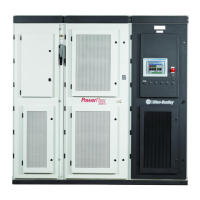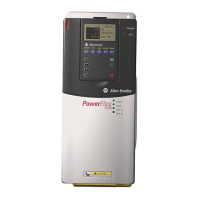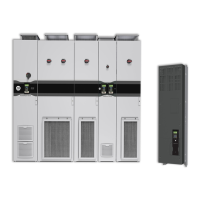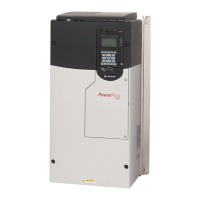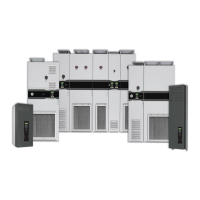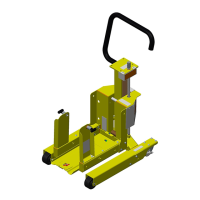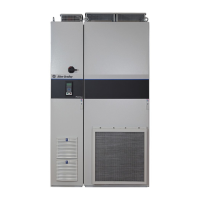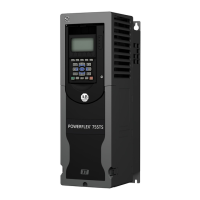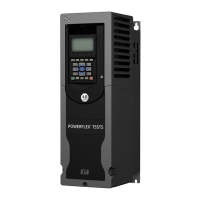1-28 Functional Description
7000-TD002A-EN-P – September 2007
Tachometer/Encoder Option The optional tachometer/encoder provides two significant
enhancements to the drive control:
1. Provides an accurate measurement of motor speed and direction
at all times
2. Extends closed loop speed and torque control down to nearly
zero speed.
A pulse tachometer, also called a pulse generator or incremental
encoder, produces a pulse train output with a frequency proportional
to shaft speed. By counting the number of pulses, the motor speed
can be determined. The tachometer is wired to an optional
tachometer board installed on connector J28 of the ACB.
Parameter Tach Type (233) specifies which type of tachometer has
been installed. A Quadrature tachometer provides two outputs A
and B. Using these signals the motor speed and its direction of
rotation can be determined. On other hand Single tachometer only
gives information about the speed and should be used in applications
where no reverse rotation occurs.
Counting the number of tach pulses over a certain sampling period
yields the tach output frequency, from which the shaft speed can be
calculated using the tach pulses per revolution (ppr) specified by
parameter Tach PPR (234). The tach resolution determines the
minimum motor speed that can be measured. If high starting torque or
very low speed operation is required, a high resolution such as 1024 or
2048 ppr must be provided. Otherwise, a low resolution such as 240 or
360 ppr is adequate. E.g if the tach frequency is measured to be 30 kHz,
then with a 1024 PPR, the motor speed is calculated as
The voltage model is not usable for stator frequencies less than 3 Hz.
To control flux and torque at low speeds, the PowerFlex 7000 drive
switches to current model based on indirect vector control. With
indirect control, the position of the rotor flux is not directly measured
but is indirectly predicted by adding the calculated slip angle to the
measured rotor angle. The rotor angle is obtained by integrating the
output of the pulse tach (the zero position is arbitrary). The slip
frequency required to provide the desired flux and torque is calculated
by the motor model. The slip frequency is integrated to get the slip
angle and added to the measured rotor angle to obtain the flux angle.
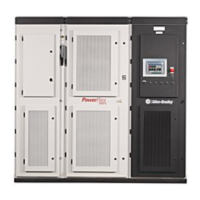
